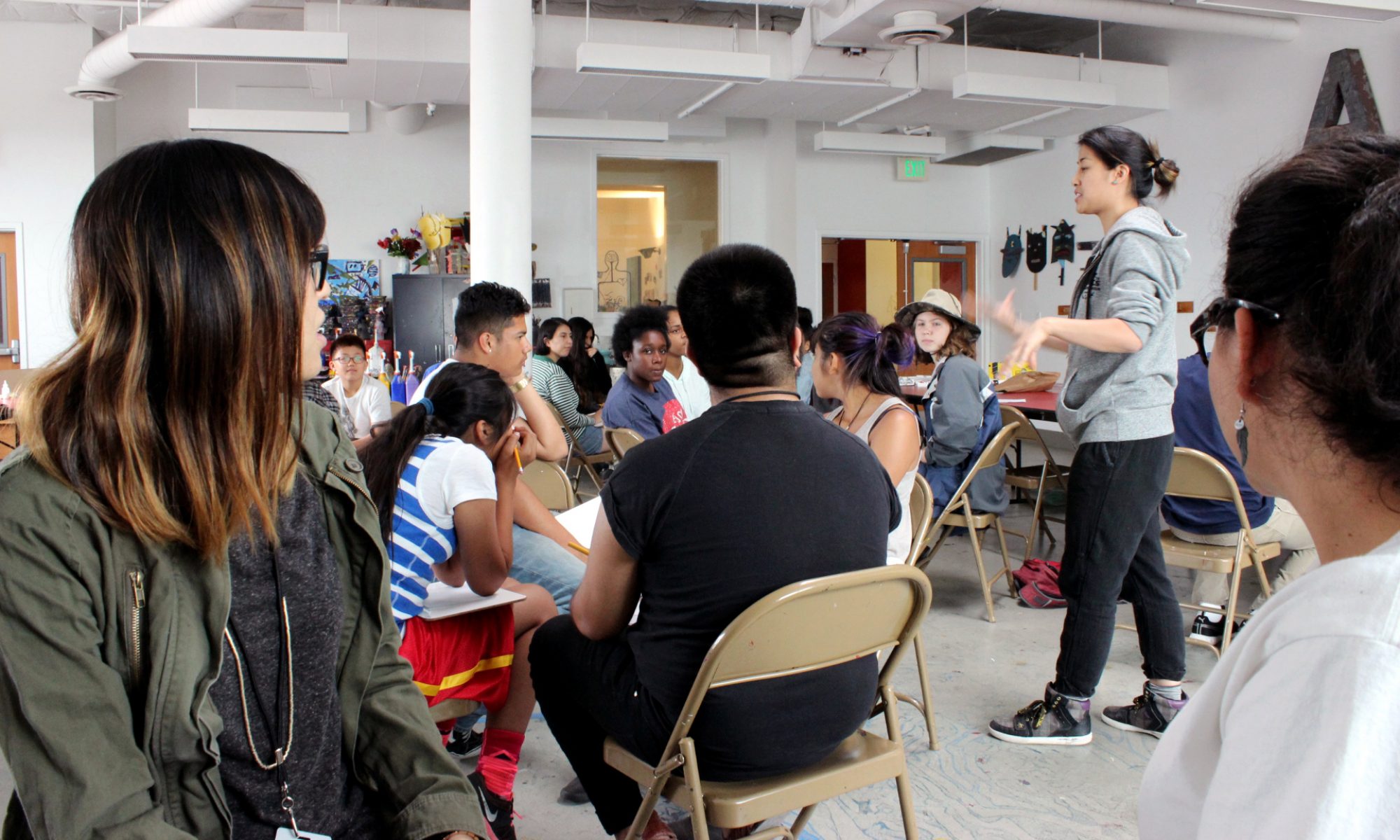Areas of Development and Impact
Connect : Who am I and where do I belong?
Young people explore and build a strong sense of self in relationship to others.

“I have learned more about myself than I thought I could know. Thanks, for teaching me the value of work, the value of my individuality, and most importantly thank you for being there for me.” – Tamara, Salt Lake City, UT
Young people thrive with opportunities to strengthen their identities and develop meaningful relationships in quality healing-centered creative environments. Identity development is a combination of how you see yourself, how you relate to others, and how you integrate into the communities to which you belong. Young people strengthen their personal and social identity as they better understand past and present traumas and stereotypes, explore multiple possible selves, and build hope and desired paths for their future.
Select Bibliography
hooks, b. (2014). Teaching to transgress. Routledge.
bell hooks’ radical, loving intellect shines through in Teaching to Transgress. She talks about the utility of theory as a liberatory social practice. hooks shows readers that using traumatic lived experience to create new possibilities through theory fulfills a revolutionary purpose. She makes the case that intellectualism is a component of freedom and that the most fertile ground for theory to emerge is from personal experience. While resolving issues that are most pressing in daily life, engaging in discussions on theory allows us to name the pain and lead to empowering and liberating states of being.
brown, a. m. (2017). Emergent strategy.
Inspired by Octavia Butler’s explorations of our human relationship to change, Emergent Strategy is radical self-help, society-help, and planet-help designed to shape the futures we want to live. Change is constant. The world is in a continual state of flux. It is a stream of ever-mutating, emergent patterns. Rather than steel ourselves against such change, this book invites us to feel, map, assess, and learn from the swirling patterns around us in order to better understand and influence them as they happen. Most notable passages: “We heal ourselves and we heal in relationship, and from that place, simultaneously, we create more space for healed communities, healed movements, healed worlds.”. “Often the biggest support we need is to speak the truth out loud to those who will hold it with us from a vantage point of unconditional love.” “Coevolution is the change of a biological object triggered by the change of a related object.”
Halverson, E. R. (2005). InsideOut: Facilitating gay youth identity development through a performance-based youth organization. Identity, 5(1), 67-90.
This study reports on a yearlong ethnographic investigation of youth participation in a theater organization for LGBTQ youth in Chicago, IL. The researchers were interested in understanding how the literacy and narrative development activities embedded in theater experiences assisted LGBTQ youth in positive identity development, providing opportunities to learn about the psychological, personal, and social dimensions of their identities. To pursue this inquiry, the researchers followed a cohort of 42 youth ages 14-20 as they engaged in a 22-week long workshop on narrative-performance. In this setting, youth were involved in telling personally meaningful stories to one another, while the researchers observed workshop activities, conducted interviews with youth, and analyzed the content of youth-generated stories for evidence of the often-challenging developmental tasks associated with LGBTQ identity formation: unlearning the assumption of heterosexuality, identity disclosure; and managing a stigmatized identity. The author found that in using theater as a vehicle to develop personal stories, young people learned how to use literary devices such as point-of-view, irony, and repetition as strategies for addressing the psychological, personal, and social dimensions of their identity.
Halverson, E. R., Lowenhaupt, R., Gibbons, D., & Bass, M. (2009). Conceptualizing identity in youth media arts organizations: A comparative case study. E-Learning, 6(1), 23-42.
The authors of this study conducted a comparative case study of two media organizations to examine the relationship between youth media production and identity development. Based on prior research that suggests that narrative construction and storytelling are key to how young people understand themselves and the world around them, the authors posit that youth media production projects that are geared around “telling, adapting, and performing narratives of personal experience” (p. 629) are a means for supporting positive identity development. To better understand how youth media organizations conceptualize and promote identity development, the authors of the study selected two youth media organizations focused on using film as a mechanism for cultivating youth voice and identity development in diverse communities. The findings of the study draw on interviews conducted with organizational leaders and youth and content analyses of youth films and organizational documents.
